-
 Bitcoin
Bitcoin $85,200.0289
3.49% -
 Ethereum
Ethereum $1,917.0130
5.27% -
 Tether USDt
Tether USDt $0.9999
0.02% -
 XRP
XRP $2.1514
3.54% -
 BNB
BNB $610.3236
1.11% -
 Solana
Solana $126.7091
1.31% -
 USDC
USDC $0.9999
0.00% -
 Dogecoin
Dogecoin $0.1741
5.72% -
 Cardano
Cardano $0.6808
3.69% -
 TRON
TRON $0.2367
-1.11% -
 Toncoin
Toncoin $4.0506
-0.90% -
 Chainlink
Chainlink $14.1679
4.99% -
 UNUS SED LEO
UNUS SED LEO $9.2623
1.29% -
 Stellar
Stellar $0.2728
3.92% -
 Avalanche
Avalanche $19.6803
5.68% -
 Sui
Sui $2.4361
7.90% -
 Shiba Inu
Shiba Inu $0.0...01272
3.18% -
 Hedera
Hedera $0.1710
5.21% -
 Polkadot
Polkadot $4.1870
4.25% -
 Litecoin
Litecoin $84.9881
2.49% -
 MANTRA
MANTRA $6.3165
2.04% -
 Bitcoin Cash
Bitcoin Cash $310.0792
2.64% -
 Bitget Token
Bitget Token $4.6318
3.11% -
 Dai
Dai $1.0001
0.02% -
 Ethena USDe
Ethena USDe $0.9999
0.02% -
 Pi
Pi $0.7092
-3.13% -
 Hyperliquid
Hyperliquid $13.3482
3.16% -
 Monero
Monero $218.5465
1.76% -
 Uniswap
Uniswap $6.3218
6.04% -
 Aptos
Aptos $5.4336
3.71%
How to solve the cooling problem of graphics card mining?
GPUs generate significant heat during mining, requiring efficient cooling to prevent damage; active methods like fans and liquid cooling are essential for high-performance operations.
Mar 31, 2025 at 02:35 pm

Understanding GPU Cooling in Cryptocurrency Mining
Graphics cards (GPUs) generate significant heat during cryptocurrency mining, demanding efficient cooling solutions to prevent damage and maintain optimal performance. Overheating can lead to reduced hash rates, instability, and even permanent hardware failure. This necessitates a proactive approach to managing GPU temperatures. The intensity of the heat generated is directly proportional to the mining algorithm and the card's power consumption. Different cooling strategies are necessary depending on the scale of your operation – from a single GPU to a large mining farm.
Passive Cooling Techniques
Passive cooling methods rely on natural airflow and the design of the GPU itself. While less effective than active cooling for high-intensity mining, they can be useful in certain scenarios.
Improved Case Airflow: Ensure your mining rig's case has adequate ventilation, with sufficient intake and exhaust fans. Properly positioned fans can create a consistent airflow path, carrying away heat generated by the GPUs. Consider using larger fans for better airflow.
Open-Air Mining: This involves placing the GPUs outside of a case, allowing for unrestricted airflow. This method is generally more effective than case-based cooling but can lead to dust accumulation and is less aesthetically pleasing.
Heatsink Enhancement: While not strictly passive, upgrading to a larger or more efficient heatsink can improve passive cooling capabilities. This involves replacing the stock heatsink with a higher-quality aftermarket model, often with copper heat pipes for enhanced heat dissipation.
Active Cooling Techniques
Active cooling employs fans and other mechanisms to actively remove heat from the GPUs. These methods are essential for high-performance mining operations.
Case Fans: Adding additional case fans, strategically positioned to create optimal airflow, significantly reduces GPU temperatures. Consider using high-static-pressure fans designed for cooling components rather than general-purpose fans.
GPU Fan Upgrades: Replacing the stock GPU fans with higher-performance models can improve cooling efficiency. Look for fans with higher CFM (cubic feet per minute) ratings. Consider fans with better bearing quality for longer lifespan.
External Radiator Systems: These systems use a radiator and fan to cool a liquid coolant that circulates through the GPUs. They provide superior cooling compared to air cooling, especially for high-power GPUs or multiple GPUs. These are often called "liquid cooling" systems.
Water Cooling: Water cooling, often using custom loops, provides excellent cooling performance, but requires more technical expertise and is generally more expensive. Custom water cooling loops offer the best cooling potential for high-end mining rigs.
Monitoring GPU Temperatures
Regular monitoring of GPU temperatures is crucial for preventing overheating. Several tools can help you monitor these temperatures:
GPU-Z: This free software provides detailed information about your GPU, including its temperature, clock speeds, and fan speed. It's essential for tracking GPU health and performance.
MSI Afterburner: This popular overclocking utility also includes robust temperature monitoring capabilities. It allows fine-grained control over fan speeds, aiding in thermal management.
Mining Software: Most mining software includes temperature monitoring features, allowing you to track the temperature of each GPU within your mining rig. This provides a centralized view of your entire mining operation's thermal health.
Preventing Dust Accumulation
Dust buildup significantly reduces the efficiency of cooling systems. Regular cleaning is essential for maintaining optimal performance and preventing overheating.
Compressed Air: Use compressed air to carefully remove dust from the GPUs, fans, and inside the case. Be sure to use short bursts to avoid damaging components.
Vacuum Cleaner (Low Setting): A vacuum cleaner can be used cautiously, on a low setting, to remove loose dust. Avoid direct contact with the components to prevent damage.
Dust Filters: Installing dust filters on the case's intake vents can help prevent dust from entering the system. Regularly clean or replace these filters.
Overclocking Considerations
Overclocking your GPUs can increase their hash rate, but it also increases heat generation. Careful management of temperatures is essential when overclocking.
Monitor Temperatures Closely: While overclocking, constantly monitor GPU temperatures to ensure they remain within safe operating ranges.
Adjust Fan Curves: Increase fan speeds to compensate for the increased heat generated by overclocking. This can be done manually or automatically using software like MSI Afterburner.
Reduce Overclock if Necessary: If temperatures become excessively high, reduce the overclock to bring them back within safe limits. Prioritize the health of your hardware.
Common Questions
Q: My GPU is overheating, what should I do immediately?
A: Immediately shut down your mining rig to prevent permanent damage. Investigate the cause (dust buildup, fan failure, insufficient cooling) and implement the appropriate solution before restarting.
Q: What is the optimal GPU temperature for mining?
A: The optimal temperature varies depending on the specific GPU model, but generally staying below 70-80°C (158-176°F) is recommended. Exceeding these temperatures can significantly reduce lifespan and performance.
Q: How often should I clean my mining rig?
A: The frequency depends on the environment, but cleaning every 2-4 weeks is generally recommended to prevent dust accumulation and maintain optimal cooling.
Q: Can I use a standard CPU cooler for GPU cooling?
A: No. GPUs and CPUs have different thermal interfaces and require different types of coolers. Using a CPU cooler on a GPU will likely be ineffective and could damage the GPU.
Q: Is liquid cooling worth the investment for mining?
A: Liquid cooling offers superior cooling performance, especially for high-power GPUs or large mining operations. However, it's more expensive and complex to set up than air cooling. The cost-benefit analysis depends on your specific needs and budget.
Disclaimer:info@kdj.com
The information provided is not trading advice. kdj.com does not assume any responsibility for any investments made based on the information provided in this article. Cryptocurrencies are highly volatile and it is highly recommended that you invest with caution after thorough research!
If you believe that the content used on this website infringes your copyright, please contact us immediately (info@kdj.com) and we will delete it promptly.
- The launch of USD1, a U.S. dollar-pegged stablecoin by World Liberty Financial (WLFI), a cryptocurrency platform linked to President Donald Trump’s family, is raising concerns in Congress.
- 2025-04-02 06:25:12
- title: Bybit to Close Its NFT Marketplace on April 8
- 2025-04-02 06:25:12
- Solana (SOL) Hits New ATH in Network Adoption as JetBolt (JBOLT) Presale Explodes
- 2025-04-02 06:20:12
- Lip-Bu Tan Makes His First Public Appearance as Intel's New CEO, Outlining His Plan to Restore the Struggling Chipmaker
- 2025-04-02 06:20:12
- Zenith Coin (ZENITH) Overview
- 2025-04-02 06:15:12
- As cryptocurrency experiences a growth in legitimacy across the global financial market, meme coins like Shiba Inu are riding the wave of internet culture to find success.
- 2025-04-02 06:15:12
Related knowledge
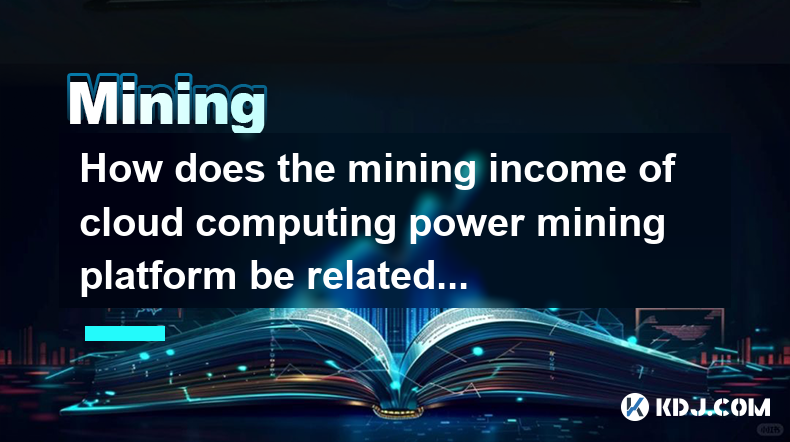
How does the mining income of cloud computing power mining platform be related to mining pool allocation?
Apr 02,2025 at 01:56am
The relationship between the mining income of a cloud computing power mining platform and the allocation of mining pools is a crucial aspect of cryptocurrency mining. Mining income is influenced by various factors such as the efficiency of the mining hardware, electricity costs, and the specific cryptocurrency being mined. However, the allocation of min...
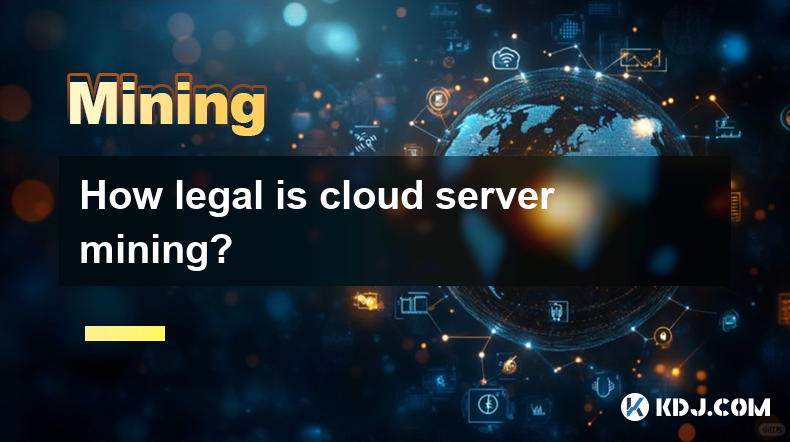
How legal is cloud server mining?
Apr 01,2025 at 08:08am
Cloud server mining has become an increasingly popular method for individuals and companies to participate in cryptocurrency mining without the need for expensive hardware and high electricity costs. However, the legality of cloud server mining can be a complex issue, as it varies by jurisdiction and depends on several factors. This article will explore...
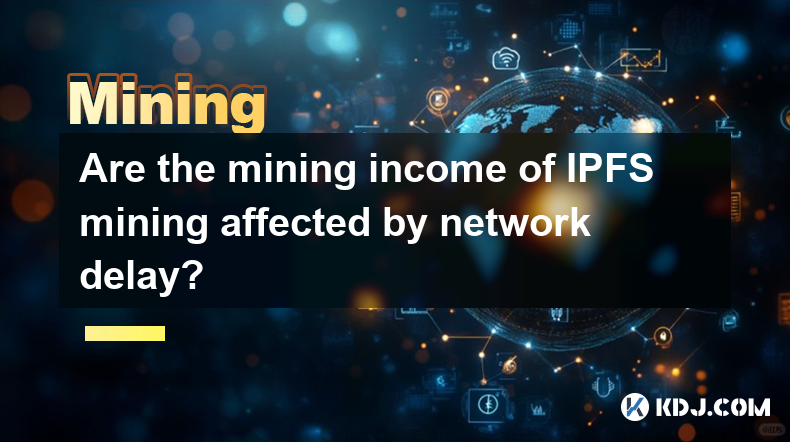
Are the mining income of IPFS mining affected by network delay?
Apr 01,2025 at 09:36pm
Are the Mining Incomes of IPFS Mining Affected by Network Delay? Understanding IPFS Mining and Network Delay's ImpactIPFS (InterPlanetary File System) mining, unlike Bitcoin mining, doesn't involve solving complex cryptographic puzzles. Instead, it focuses on providing storage and bandwidth to the network. Miners earn rewards for storing and sharing dat...
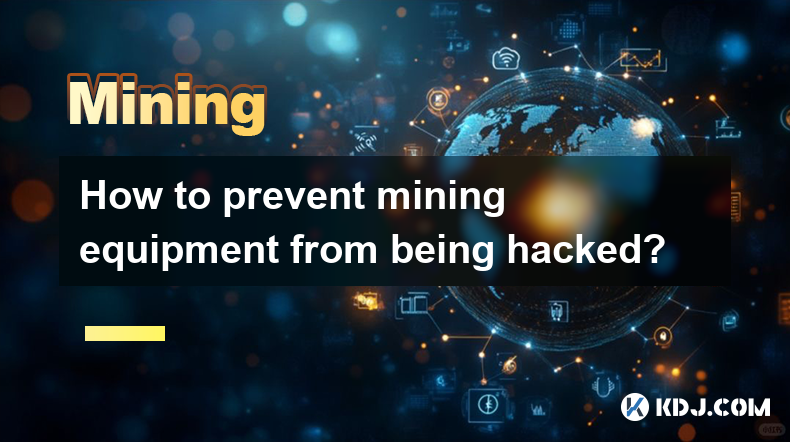
How to prevent mining equipment from being hacked?
Apr 01,2025 at 06:22am
Understanding the ThreatsCryptocurrency mining, while potentially lucrative, exposes your equipment to various cyber threats. These threats range from simple malware infections that steal your mining profits to sophisticated attacks that hijack your entire operation. Understanding these threats is the first step in effective protection. This includes r...
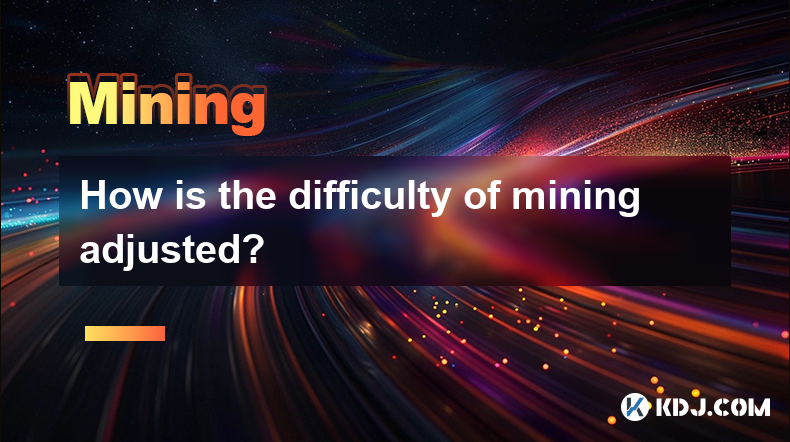
How is the difficulty of mining adjusted?
Apr 01,2025 at 07:14am
Understanding Bitcoin's Difficulty Adjustment MechanismBitcoin's mining difficulty is a crucial element ensuring the network's stability and security. It dynamically adjusts to maintain a consistent block generation time, approximately every 10 minutes. This adjustment prevents miners with overwhelming computing power from monopolizing block creation a...

How to purchase mining equipment for FIL mining?
Apr 01,2025 at 09:49pm
Understanding FIL Mining Hardware RequirementsFilecoin (FIL) mining, unlike Bitcoin mining, doesn't rely on ASICs (Application-Specific Integrated Circuits). Instead, it utilizes storage-based mining, requiring powerful storage hardware and a robust network connection. This means you'll need to invest in storage servers, often referred to as storage no...

How does the mining income of cloud computing power mining platform be related to mining pool allocation?
Apr 02,2025 at 01:56am
The relationship between the mining income of a cloud computing power mining platform and the allocation of mining pools is a crucial aspect of cryptocurrency mining. Mining income is influenced by various factors such as the efficiency of the mining hardware, electricity costs, and the specific cryptocurrency being mined. However, the allocation of min...

How legal is cloud server mining?
Apr 01,2025 at 08:08am
Cloud server mining has become an increasingly popular method for individuals and companies to participate in cryptocurrency mining without the need for expensive hardware and high electricity costs. However, the legality of cloud server mining can be a complex issue, as it varies by jurisdiction and depends on several factors. This article will explore...

Are the mining income of IPFS mining affected by network delay?
Apr 01,2025 at 09:36pm
Are the Mining Incomes of IPFS Mining Affected by Network Delay? Understanding IPFS Mining and Network Delay's ImpactIPFS (InterPlanetary File System) mining, unlike Bitcoin mining, doesn't involve solving complex cryptographic puzzles. Instead, it focuses on providing storage and bandwidth to the network. Miners earn rewards for storing and sharing dat...

How to prevent mining equipment from being hacked?
Apr 01,2025 at 06:22am
Understanding the ThreatsCryptocurrency mining, while potentially lucrative, exposes your equipment to various cyber threats. These threats range from simple malware infections that steal your mining profits to sophisticated attacks that hijack your entire operation. Understanding these threats is the first step in effective protection. This includes r...

How is the difficulty of mining adjusted?
Apr 01,2025 at 07:14am
Understanding Bitcoin's Difficulty Adjustment MechanismBitcoin's mining difficulty is a crucial element ensuring the network's stability and security. It dynamically adjusts to maintain a consistent block generation time, approximately every 10 minutes. This adjustment prevents miners with overwhelming computing power from monopolizing block creation a...

How to purchase mining equipment for FIL mining?
Apr 01,2025 at 09:49pm
Understanding FIL Mining Hardware RequirementsFilecoin (FIL) mining, unlike Bitcoin mining, doesn't rely on ASICs (Application-Specific Integrated Circuits). Instead, it utilizes storage-based mining, requiring powerful storage hardware and a robust network connection. This means you'll need to invest in storage servers, often referred to as storage no...
See all articles























































































